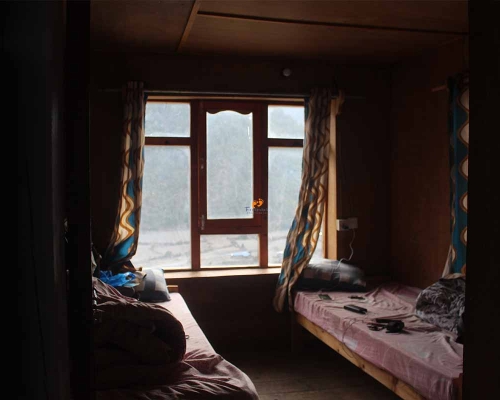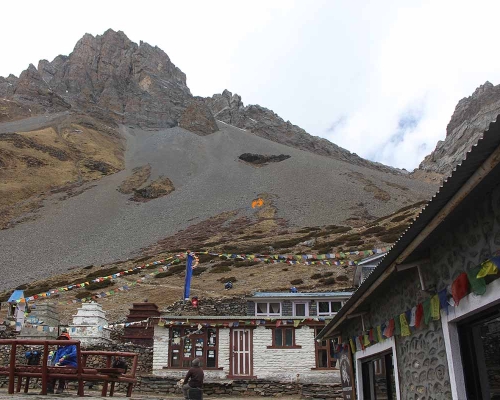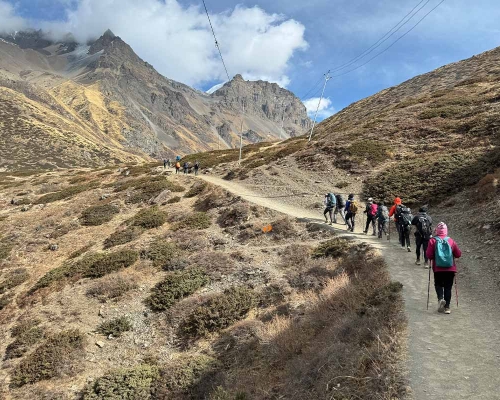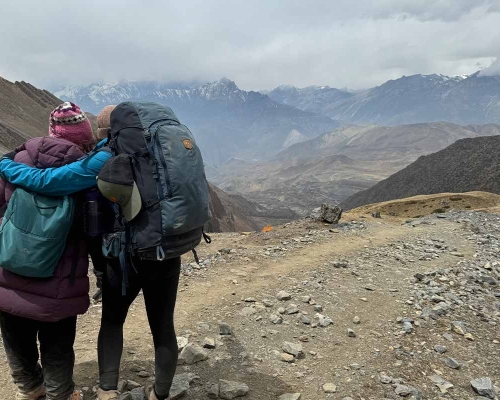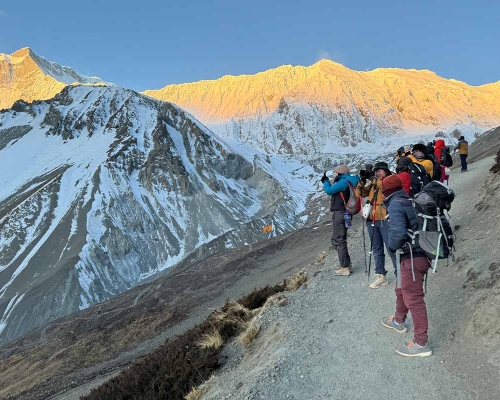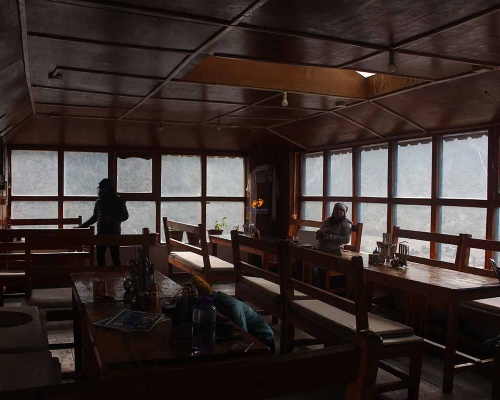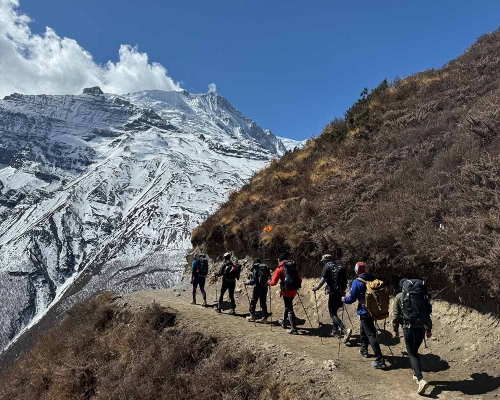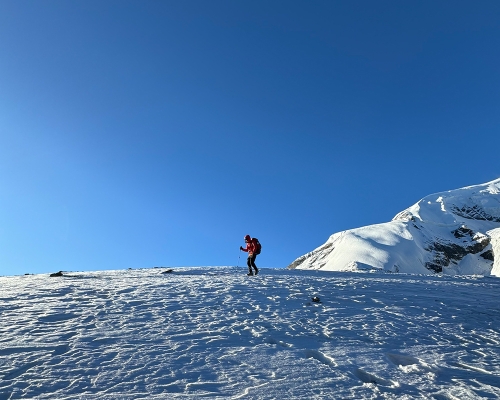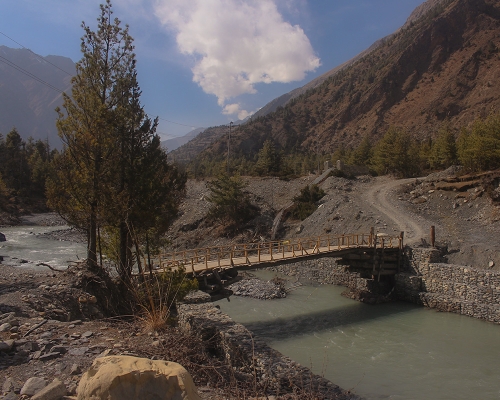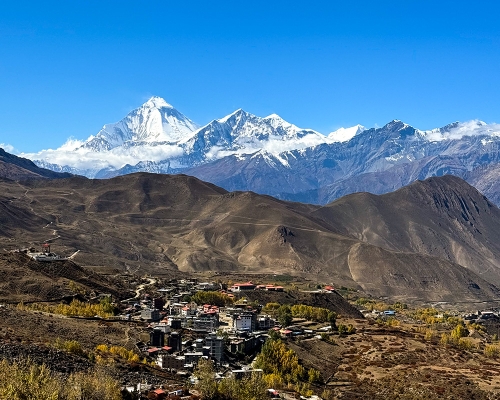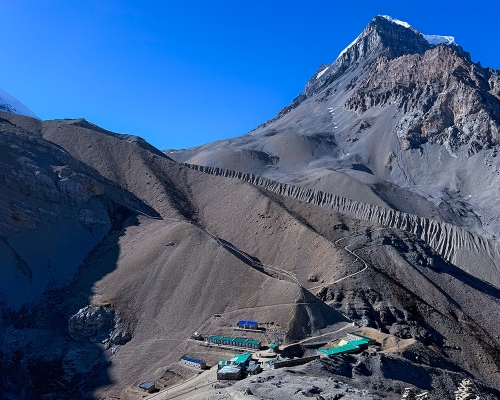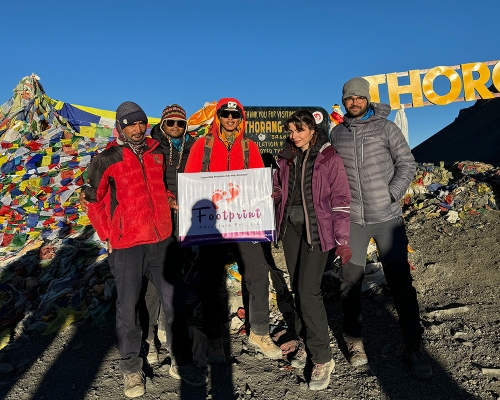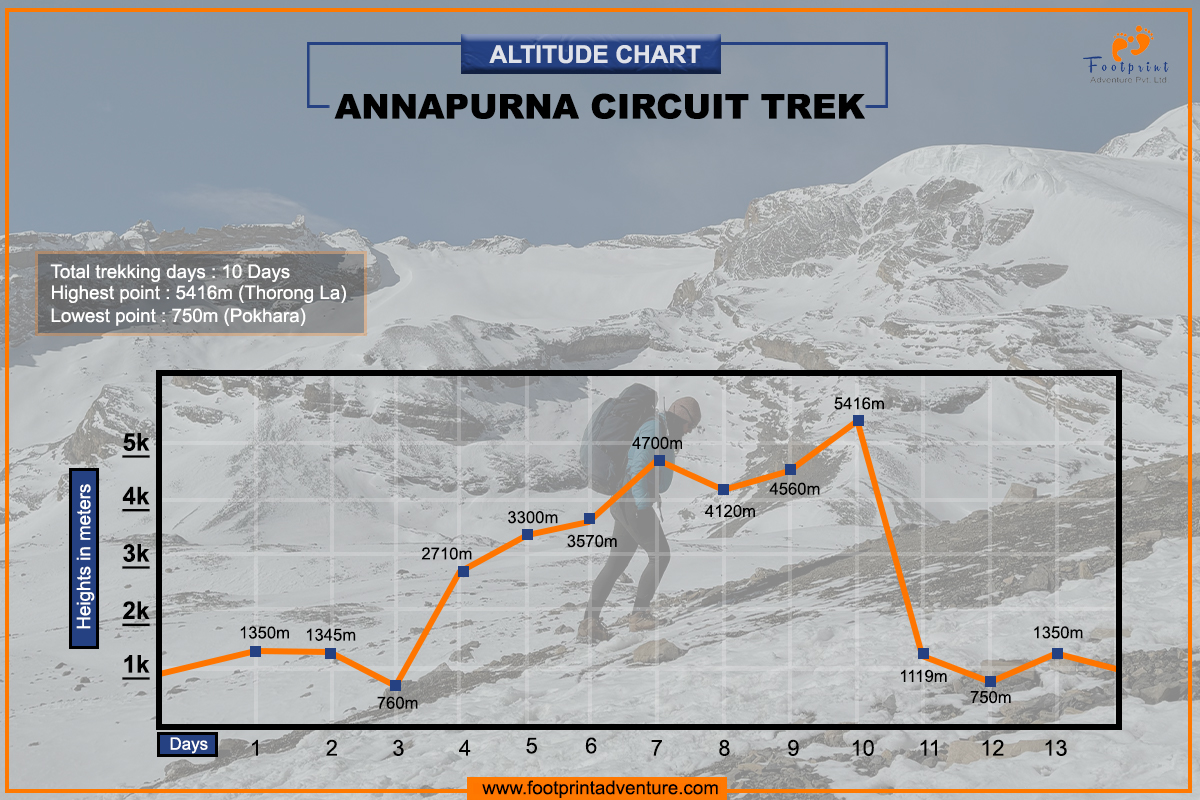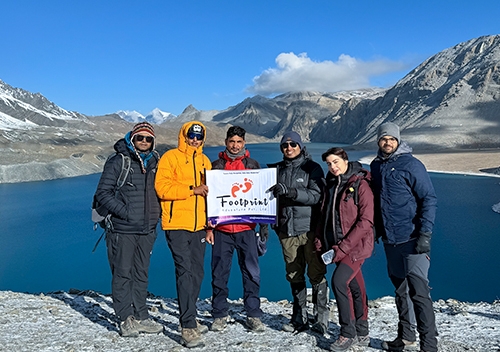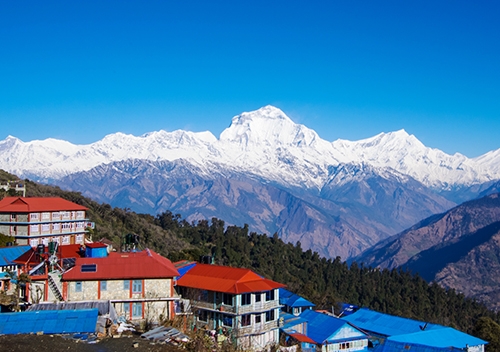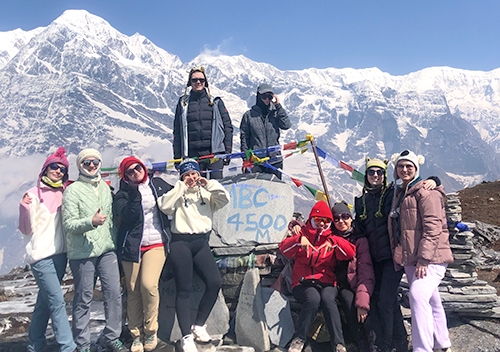The Annapurna Circuit trek is among the most admired and diverse treks in the Annapurna mountain range, which is located on the northwestern side of Nepal. Often called the ‘Round Annapurna Trek’, it provides an unparalleled trekking experience at the foot of the world's 10th highest mountain, Mt. Annapurna I. This trek around Annapurna offers panoramic views of a multitude of landscapes, cultures, Buddhist stupas, calm lakes, terraced fields, and beautiful villages.
Hiking the Annapurna Circuit is suitable for both beginners and experienced trekkers. This trek goes around the Annapurna Range and crosses the renowned Thorong-La Pass at a height of 5,416 meters. Trekkers will witness a diverse range of landscapes, from subtropical forests and alpine meadows to semi-desert terrain of Manang and Mustang village, similar to that of Tibet. The Annapurna circuit trekking route passes through six different districts Baglung, Kaski, Lamjung, Manang, Mustang, and Myagdi, covering a distance of approximately 160 to 230 km.
Perhaps the highlight of the Annapurna circuit trekking is experiencing a walk along the Kali Gandaki Gorge, the deepest gorge in the world. While trekking, one gets spectacular views of Mt. Annapurna I, Mt. Dhaulagiri, Machhapuchhre (Fishtail), Manaslu, among many others.
The Annapurna Circuit trek offers a combination of Hinduism and Buddhist influences, especially at the Muktinath temple. Moreover, during the trek, you will pass through different ethnic groups and villages like Gurung, Magar, Thakali, and Manangi. This is a great chance to meet the local people and understand their culture and way of life.
Highlights of the Annapurna Circuit Trek
- UNESCO World Heritage Site Excursions in Kathmandu include Pashupatinath Temple, Swyambhunath Stupa, and Patan Durbar Square
- Lush green forest, alpine forest, and rich biodiversity in the largest conservation area - ACAP
- Trekking through the yak pastures, grazing lands, and farmlands in Manang Valley
- Magnificent glacial lakes, natural waterfalls, deep Georges, and glacier rivers
- Stunning views of beautiful snow-capped mountains like Annapurna range, Thorang Peak, Manaslu, Gorkha Himal, Lamjung Himal, Dhaulagiri, Tukuche Peak, Nilgiri, Machapuchhre, and many more
- A glimpse of ethnic people, their lifestyle, culture, and traditions
- Explore the historic sacred Muktinath Temple, which is equally important for the Hindu and Buddhist religions
- Experience of world's highest trekking pass - Thorongla Pass (5,416m)
- Scenic flight experience from Pokhara to Kathmandu
- Experience the best touristic city of Nepal - Pokhara City
Major Highlights of Annapurna Circuit Trek
Thorang-la Pass (5,416m)
Thorong-La Pass, also known as Thorung La, is a mountain pass in central Nepal's Damodar Himal, which is located north of the Annapurna Himal. It is 5,416 meters (17,769 feet) above sea level. The two mountains that make up Thorong La are Khatung Kang and Yaskawa Kang. Thorong La is the highest point on the Annapurna Circuit trail, a 300-kilometer (190-mile) path that goes around the Annapurna mountain range. Traders from the area frequently utilize the route in addition to trekkers. This pass is often considered the world's highest commercial trekking pass into the foothills of the Annapurna Himalaya range.
Mesmerizing Mountain Vistas
The goal of this trip is to get to the top of the tenth-highest mountain in the world and take pictures of the beautiful mountains in the area. The Ghorepani Poonhill, in the Annapurna Region, is one of the best places to see the mountains from above. During the trip, you will be able to see many beautiful mountains, including Mt. Annapurna I, the tenth-highest mountain in the world, as well as Mt. Annapurna II, Mt. Annapurna III, Mt. Annapurna IV, Mt. Annapurna South, Mt. Gangapurna, Hiunchuli, Mt. Dhaulagiri I, Mt. Dhaulagiri, and the Nile horizon.
Prominent Ethnic Groups and Cultures
Annapurna Circuit Trek is a difficult and spiritual hike. You'll pass through small villages and settlements where you may learn about the Gurung and Magar cultures. You may encounter Thakali or Loba while wandering along the rhododendron-lined path. They prefer to live in the lower regions of the Annapurna Mountains in the Himalayas. You'll pass across little chores and gumbas along the road. Travelers often trek across terraced farmlands and rice farms. Pine and bamboo forests offer a wonderful escape from metropolitan life.
Who Should Trek to the Annapurna Circuit?
The Annapurna Circuit Trekking is generally categorized as moderate trekking. However, Altitude sickness should be considered while evaluating Nepali trekking routes. At 4,000 m (13,123 ft) above sea level, hours seem to last forever. The Annapurna Circuit in Nepal is harder and takes longer than the Annapurna Base Campbecause of the 5,416m Thorong La Pass (17,764 feet). This hike is difficult because of the altitude, steep slopes, and long distances. You must be fit enough to walk 5 to 7 hours per day for this long expedition. However, this trek is perfect for trekkers who are physically fit and enjoy challenging outdoor activities. Additionally, it is also suitable for physically fit beginners.
We offer a 13-day Annapurna Circuit Trek package frequently and customize itineraries according to your preference. For more details, contact us or chat with our expert travel planner for your desired itineraries and plans for the Adventure in Nepal. To know more about the Nepal Annapurna Circuit Trek, read our comprehensive Annapurna trekking guide.
How to Prepare Yourself for the Annapurna Circuit Trek?
Preparation for the Annapurna Circuit Trek involves actual commitment as the trek involves long walking days, challenging climbs, and high altitudes. Train at least 1 to 2 months in earlier of the trek to build strength and stamina.
Start with regular aerobic exercises like running, swimming, jogging, or cycling. Work out 4 to 5 times a week for 30–40 minutes to build up your endurance and get your body used to low oxygen levels. Build up your legs, core, and arms with exercises like squats, lunges, and step-ups. Try doing stair climbing while wearing a backpack to simulate the uphill sections of the trek.
Additionally, don’t forget to pack smart. Pack only what you will require: warm clothing, water-resistant equipment, a pair of boots, a sleeping bag, and a first-aid kit with essentials. Don't forget to bring sunscreen, oral rehydration salts (ORS), power banks, and maybe something to read.
Why Choose Footprint Adventure for the Annapurna Circuit Trek in 2025/2026?
Our 13-day Short Annapurna Circuit trek itinerary includes everything you need: all three meals, accommodation, guide, and porter services, and all transport during the trip. You can just focus on walking and enjoying the journey.
In addition, we work on "Leave No Trace" principles to reduce our impact on nature. We also provide carry-me bags so that you can travel responsibly and handle your waste during the trek. By doing this, your journey helps nature and local communities.
Our guides at Footprint Adventure have years of experience on these routes and adjust the pace as per your comfort level. They constantly monitor your health when you are at high altitude and carry medical kits with them for any kind of health problem. Plus, if you don’t have your sleeping bag or any other trekking gear, we can arrange them for you. Moreover, we also assist you 24/7 throughout the trek. With us, you enjoy a well-planned, safe, and meaningful trekking experience.
What is the Best Time for the Annapurna Circuit Trek?
Hiking in the Annapurna Himalayas is best during the fall (mid-September to mid-December) and spring (March to mid-July). These seasons offer clear skies, and stunning views of the Annapurna mountain range, the beautiful Manang Valley, landscapes, and the Dhaulagiri peaks.
Keep in mind that although the monsoon season is over, the lower sections of the trail (through the jungle) can still be warm and humid, and you might encounter an occasional unexpected shower. Once you climb above 3,500 meters, the weather becomes much cooler. Even though it’s not winter, you’ll still need warm layers and a windproof jacket. To learn more about the best trekking season in Nepal, read our blog "Best Time to Trek in Nepal".

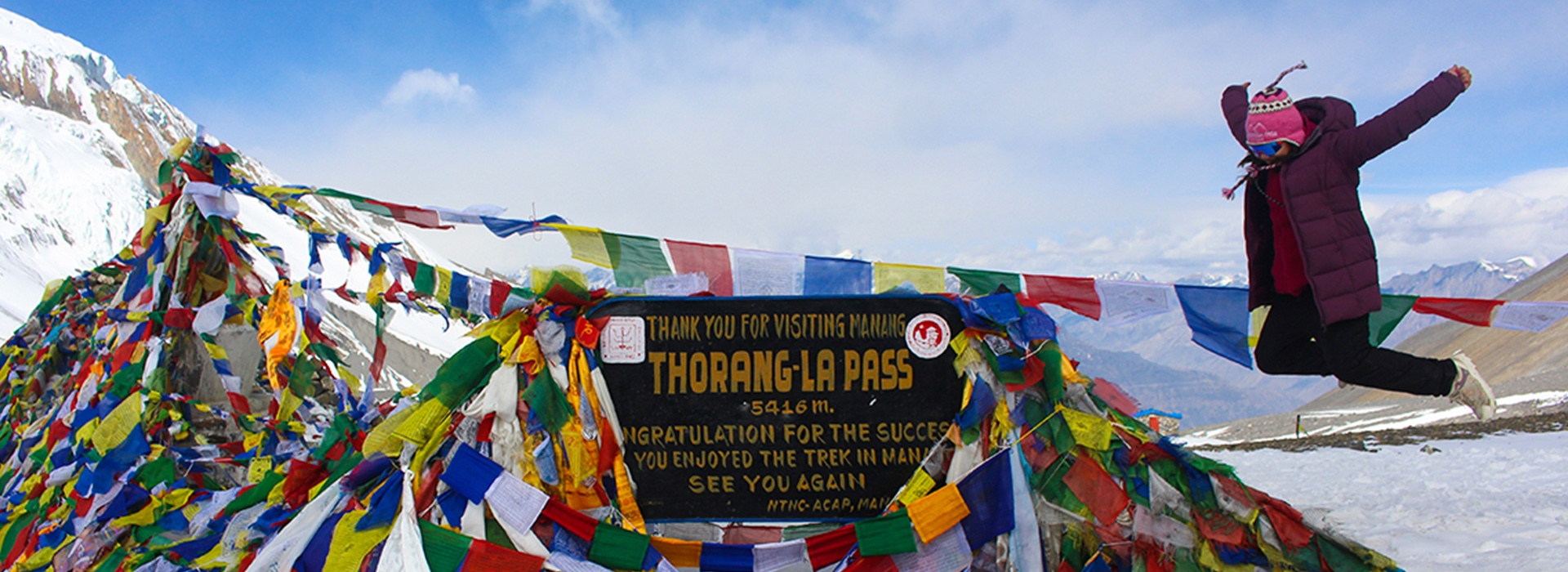
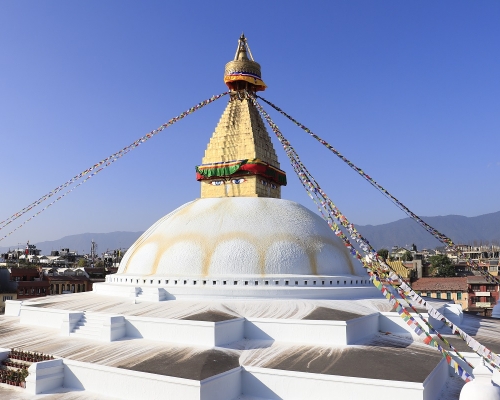
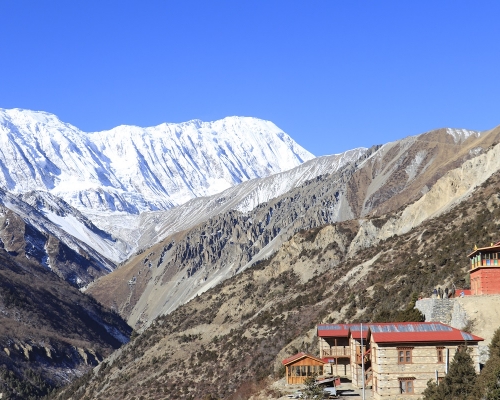
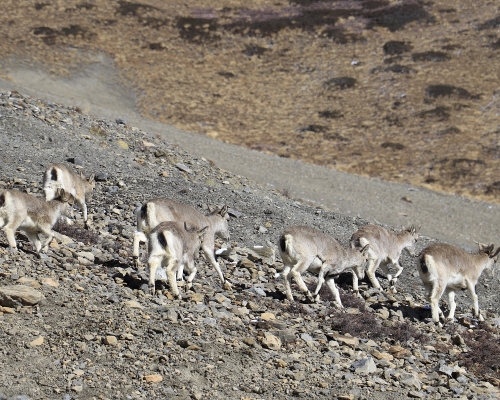
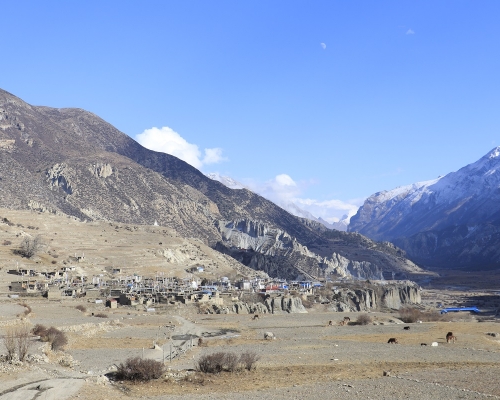
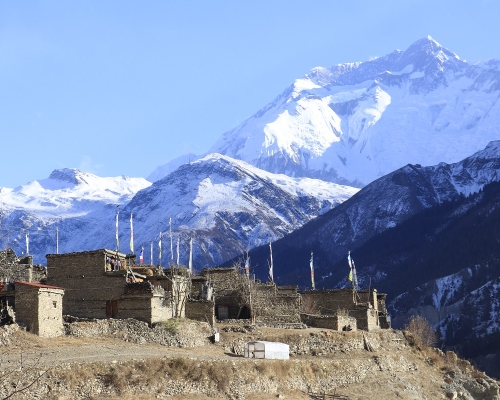
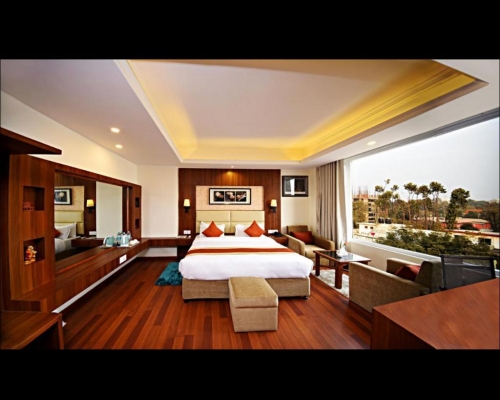
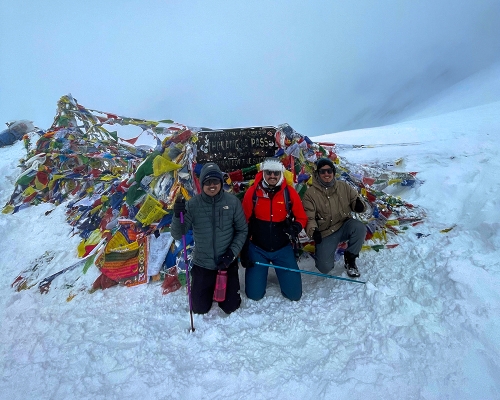
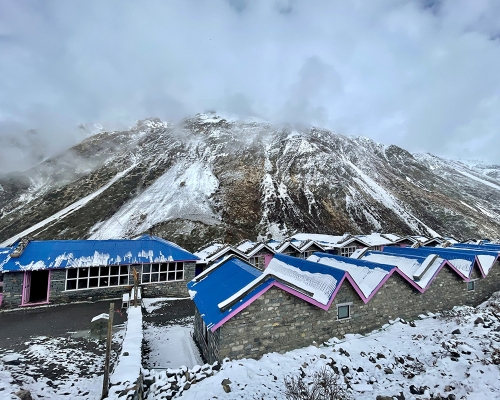
.jpg)
